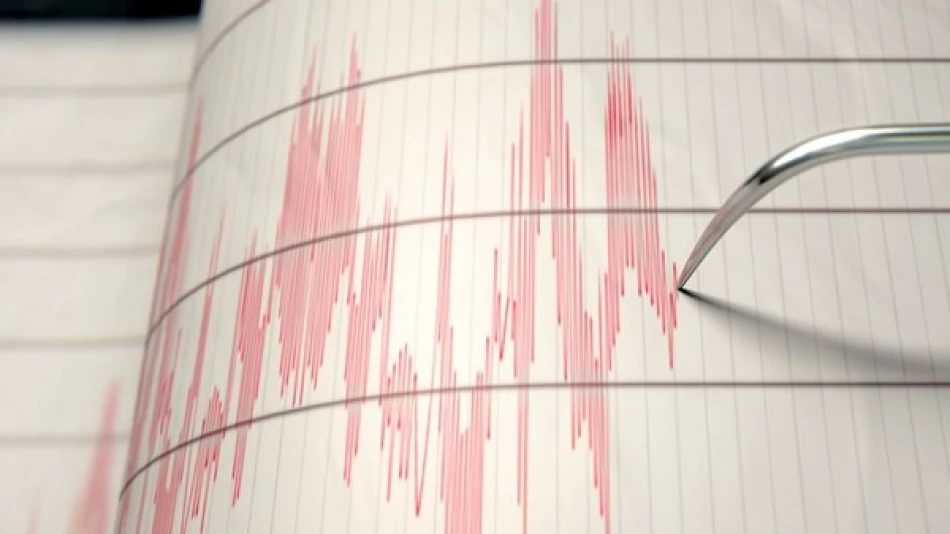
Seismic Network Detects Earthquake in the Red Sea
5.2 Magnitude Earthquake Strikes Red Sea, Highlighting Regional Seismic Activity
A moderate earthquake measuring 5.2 on the Richter scale struck the Red Sea on Tuesday afternoon, according to the UAE's National Center of Meteorology. The tremor, recorded at 4:04 PM local time on July 29, 2025, underscores the ongoing seismic activity in this geologically complex region that sits at the intersection of three major tectonic plates.
Seismic Event Details
The earthquake was detected by the UAE's National Earthquake Monitoring Network, which operates as part of the country's comprehensive meteorological and geological surveillance system. At magnitude 5.2, the tremor falls into the "moderate" category—strong enough to be felt by people but typically not causing significant structural damage to well-built infrastructure.
The timing and location of the earthquake place it within the Red Sea Rift system, an active geological zone where the Arabian and African tectonic plates are slowly separating. This process, occurring over millions of years, regularly produces seismic activity throughout the region.
Regional Geological Context
The Red Sea Rift System
The Red Sea represents one of the world's youngest ocean basins, formed by the gradual separation of the Arabian Peninsula from Africa. This ongoing continental drift creates a seismically active environment, with earthquakes occurring regularly along the rift valley. The region experiences dozens of minor to moderate earthquakes annually, though most go unnoticed by the general population.
Historical Seismic Patterns
Previous significant earthquakes in the Red Sea region have demonstrated the area's geological instability. In recent decades, several earthquakes exceeding magnitude 6.0 have occurred in the broader Red Sea-Gulf of Aden region, occasionally causing damage to coastal infrastructure in countries like Saudi Arabia, Egypt, and Yemen.
Implications for Regional Infrastructure
Maritime and Economic Considerations
The Red Sea serves as one of the world's most critical shipping corridors, with approximately 12% of global trade passing through the Suez Canal and Red Sea route annually. While a 5.2 magnitude earthquake is unlikely to disrupt shipping operations directly, it serves as a reminder of the geological risks facing this vital economic artery.
Energy sector implications are particularly relevant, as the Red Sea region hosts significant oil and gas infrastructure. Saudi Arabia and other Gulf states maintain extensive offshore drilling operations and coastal refineries that must account for seismic risks in their engineering and safety protocols.
Monitoring and Preparedness Systems
The UAE's ability to quickly detect and report this earthquake demonstrates the sophistication of regional seismic monitoring networks. These systems have become increasingly important as Gulf states invest heavily in mega-projects and urban development that require comprehensive geological risk assessment.
Similar monitoring capabilities exist across the region, with Saudi Arabia, Egypt, and other Red Sea nations maintaining their own seismological networks. This distributed monitoring approach enables rapid detection and analysis of seismic events, crucial for both immediate safety responses and long-term geological research.
Broader Regional Seismic Outlook
Tuesday's earthquake fits within normal patterns of seismic activity for the Red Sea region. While moderate earthquakes like this one rarely cause significant damage, they serve as important reminders of the underlying geological processes shaping the Middle East and East Africa.
The event also highlights the importance of continued investment in seismic monitoring and building codes designed to withstand earthquake forces. As Gulf states continue rapid urban development and infrastructure expansion, understanding and preparing for seismic risks becomes increasingly critical for long-term economic stability and public safety.
The earthquake's detection by UAE monitoring stations demonstrates the country's growing role in regional geological surveillance, contributing valuable data to the broader scientific understanding of Red Sea seismic activity.
 Layla Al Mansoori
Layla Al Mansoori







